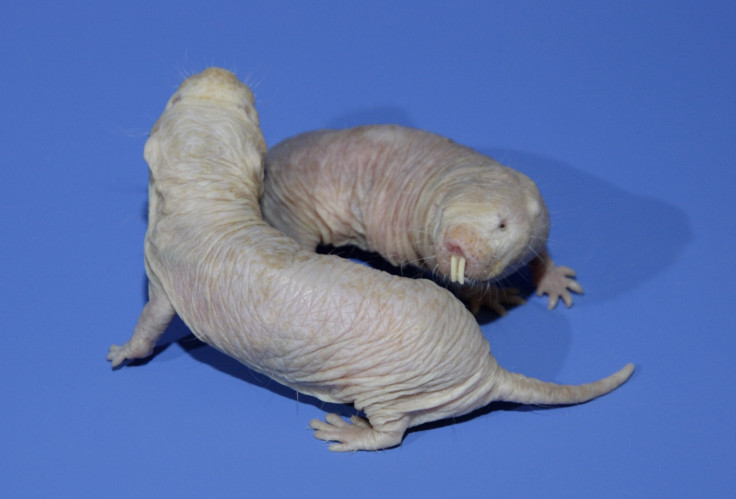Naked mole rats: Scientists edge closer to understanding extreme cancer resistance

Studying naked mole rats' impressive resistance to cancer could help advance human treatments, scientists have said. These subterranean rodents from Africa can live for up to 30 years – 10 times longer than mice – and those who have been captured to be examined almost never develop the disease.
The study, published in Nature Communications, shows this could all be down to two genes: a tumour-suppressor gene called alternative reading frame (ARF) which is active in mole rat cells but not in mice or humans, and another gene called ERAS which is only dysfunctional in rats.
Pluripotent stem cells
The scientists took skin tissue from adult mole rats and reprogrammed the cells to makes 'induced pluripotent stem cells' – cells capable of becoming any type of tissue in the body but also to form tumours known as "teratomas".
These pluripotent cells were inserted into mice with an extremely weak system. If the pluripotent cells had been from mice or other humans, they would have developed teratomas. However, here, the mice stayed clear of getting a cancer.
This indicates there might be an interesting mechanism at work in the mole rat's pluripotent stem, cells which could be useful when looking at cancer treatments.
ARF and ERAS genes
Investigating further, the scientists discovered that tumour-suppressor gene ARF was active in mole rats' pluripotent stem cells but suppressed in that of humans and mice.
Additionally, a gene favouring tumour – known as ERAS – was expressed in mice cells but mutated and dysfunctional in mole rat stem cells.
To check the importance of both these genes, the researchers suppressed the ARF gene and forced the ERAS gene expression in mole rats pluripotent stem cells. This time, when they inserted the cells in mice, the animals developed tumours.
These genetic characteristics appear unique to mole rats. This study is thus a first step in helping researchers figure out how human induced pluripotent stem cells can be used for treating cancer patients without forming new tumours.
"Further research (...) may shed new light on cancer resistance in mole rats and contribute to the generation of non-tumorigenic human-iPSCs, enabling safer cell-based therapeutics," concludes author Kyoko Miura, an assistant professor at Hokkaido University in Japan.
© Copyright IBTimes 2024. All rights reserved.






